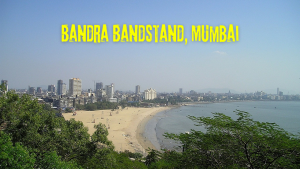Why Nagpur is Called Orange City of India. Interesting Facts about Nagpur

Orange City Nagpur: Nagpur and oranges are said to be synonymous with each other. Nagpur city of Maharashtra is called as “Orange City”. The biggest reason for this is that the main buildings here are painted in orange color. Nagpur is the third biggest city of Maharashtra after Mumbai and Pune. Nagpur is most famous for the cultivation of oranges. Therefore Nagpur is called the city of oranges.
Oranges are supplied to the entire country from this city. Nagpur is the biggest producer of oranges. Its oranges are famous all over the world. People eat the oranges of this place with great relish.
Orange City Nagpur
Most of the oranges are grown in Nagpur. There are many hectares of orange farms and orchards. Which alone supplies oranges to the whole of India every year. This city is famous for oranges. Compared to other cities of India, Nagpur is by far the largest orange producing area. The oranges here are famous all over the world. Their taste is enchanting. Nagpur is as popular for its oranges as Shimla is for apples, Mahabaleshwar for strawberries, Prayagraj for guava, Goa for cashews and Ratnagiri for Alphonso mangoes.
Know the history of oranges in Nagpur
You get to see the cultivation of juicy orange trees in Nagpur. The story of Nagpur oranges is interesting. Late Shri Raghujiraje Bhosale first grew it in Nagpur as a kitchen garden plant in 1896. After this, the production of oranges kept increasing every year. Nagpur oranges are considered one of the foreign exchange earning crops.
Specialty of Nagpur oranges
Nagpur oranges are famous all over the world due to their sweetness and juicy pulp. This fruit is famous for its sweetness in the entire world apart from India. Nagpur oranges distinguish themselves from other orange varieties with their unique aroma and distinctive taste.
A special variety of orange is grown in Nagpur. Which people also call Mandarin orange. Nagpur oranges make a different identity in India due to their sweet and sour attractive taste and easy peeling peel. Some of the best oranges are grown in Nagpur, Amravati and Wardha districts of Maharashtra. Nagpur orange is grown mostly in the Satpura hills of Vidarbha district. In 2014, Nagpur oranges were given GI designation due to their sweet and sour taste
Interesting Facts about Nagpur
1) Orange City
Nagpur is India’s largest exporter of oranges. Oranges are cultivated on many acres of land. That’s why it is also called the Orange City of India. If you are going on a trip to Nagpur city. Then do not forget to taste the bitter-sweet oranges here. Which is famous for its different varieties of oranges.
2) World’s largest hollow Buddhist stupa
The hollow Buddhist stupa was inaugurated in the year 2001. Deekshabhoomi is a beautiful stupa which is considered a holy place for Buddhists. It is the world’s largest hollow Buddhist stupa. People from all over the world come to see it. It is a place with a wonderful atmosphere surrounded by a beautiful garden. At this place in the year 1956, Indian constitution maker B.R. Ambedkar adopted Buddhism. That’s why this place is quite famous.
3) Tiger Capital of India
Nagpur and its surrounding areas have many beautiful tiger reserves. That is why people often call it the garden capital. This place has gained popularity due to wildlife photographers. Today, Maharashtra is the third state with the highest number of tigers. Millions of tourists visit here throughout the year.
4) 3000 years old history
Although Nagpur is famous for its tourist places and oranges, the history of this city is considered to be 3000 years old. Where the settlements around it have existed for thousands of years.
This city was founded in the 18th century by the king of the Gond dynasty. Many dynasties have ruled this city. These include Badami Chalukya, Yadav, Tughlaq dynasty, Mughal and Maratha dynasty. Today Nagpur is the fastest developing city.
5) India’s first textile mill
This thing may surprise you. Because in the 19th century, Nagpur was a small city. Where Jamshedji Tata set up the first mill. Which was named Central India Spinning and Weaving Company Limited. This mill is also known as Empress Mill. Because this mill was opened on the day when Queen Victoria was declared the Empress of India.
6) Double Diamond Crossing
It is difficult for two railway lines to cross each other at a railway crossing. But there is a double diamond crossing at Nagpur railway station. The Gondia railway line is the easternmost of the three main railway lines that meet at Nagpur Junction. It forms a diamond crossing and is part of the Howrah-Rourkela-Raipur line.
7) Zero Mile Marker Stone
If seen, Nagpur is the center of India geographically. Where the Zero Mile Marker is installed. The British installed this stone at the beginning of the mill. Which is quite famous.
8) Electric Taxis and E-Vehicles
With 200 e-vehicles, Nagpur is the first city in the world to use electric public transit. Which includes cars, e-rickshaws, buses and taxis. You can enjoy a “green ride” on any of the electric cars available in this city.
9) Gold Reserve
The Reserve Bank of India has opened a branch in Nagpur for gold reserves. Because it is considered the safest. A part of the gold is said to be from the pre-independence era. For information, Nagpur serves as the “geographical center” of British India.
10) Air Traffic Control
Nagpur is one of the busiest air traffic controls. Which monitors more than 300 flights every day. The Indra system was implemented in this city. Which later also got ISO 27000 certification. Nagpur is the first city in the world to be known as a provider of air navigation services.
Conclusion
Nagpur is called the city of oranges. Which has been cultivating oranges for years. People like the bitter-sweet taste of oranges here. In today’s article, we have told you a lot of information about Nagpur city. Which you must have liked. Share this information with your friends.






